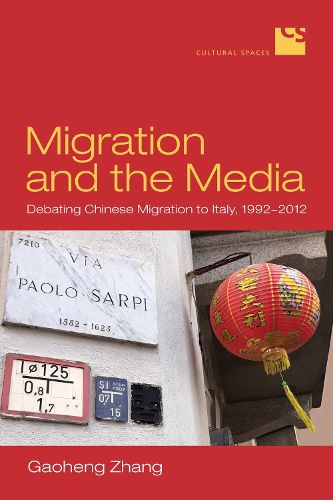Readings Newsletter
Become a Readings Member to make your shopping experience even easier.
Sign in or sign up for free!
You’re not far away from qualifying for FREE standard shipping within Australia
You’ve qualified for FREE standard shipping within Australia
The cart is loading…






The first book to analyse cultural dynamics of Chinese migration to Italy, Migration and the Media compares Italian, Chinese migrant, and international media interpretations between 1992 and 2012. From paternalistic tones reducing migrants’ motives to poverty or political oppression to fear-mongering diatribes about illegal business practices, tax evasion, and unfair competition, the Italian and international media covered this large-scale migration extensively during this period. The Chinese community also joined in the media polyphony with articles in their own newspapers and magazines, more likely refuting biased mainstream media coverage or protesting the harsh regulations that seemed to target the Chinese, but sometimes even advising fellow migrants on how to counter the media’s criticism.
Gaoheng Zhang places the strong media interest in Italian-Chinese migrant relations within relevant economic, political, cultural, and linguistic contexts. Examining how journalists, entrepreneurs, and politicians debated Italy’s Chinese, Zhang argues that these stakeholders viewed the migration as a particularly effective example to support or dispute Italy’s general stance toward migrant integration and economic globalization.
$9.00 standard shipping within Australia
FREE standard shipping within Australia for orders over $100.00
Express & International shipping calculated at checkout
The first book to analyse cultural dynamics of Chinese migration to Italy, Migration and the Media compares Italian, Chinese migrant, and international media interpretations between 1992 and 2012. From paternalistic tones reducing migrants’ motives to poverty or political oppression to fear-mongering diatribes about illegal business practices, tax evasion, and unfair competition, the Italian and international media covered this large-scale migration extensively during this period. The Chinese community also joined in the media polyphony with articles in their own newspapers and magazines, more likely refuting biased mainstream media coverage or protesting the harsh regulations that seemed to target the Chinese, but sometimes even advising fellow migrants on how to counter the media’s criticism.
Gaoheng Zhang places the strong media interest in Italian-Chinese migrant relations within relevant economic, political, cultural, and linguistic contexts. Examining how journalists, entrepreneurs, and politicians debated Italy’s Chinese, Zhang argues that these stakeholders viewed the migration as a particularly effective example to support or dispute Italy’s general stance toward migrant integration and economic globalization.